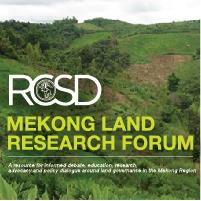An agent-based model of agricultural innovation, land-cover change and household inequality: the transition from swidden cultivation to rubber plantations in Laos PDR
Resource information
Date of publication
Diciembre 2011
Resource Language
ISBN / Resource ID
MLRF:2149
Pages
151-173
This article examines the transition from shifting cultivation to rubber production for a study area in northern Laos PDR using an agent-based model of land-cover change. A primary objective of the model was to assess changes in household-level inequality with the transition from shifting cultivation to rubber adoption. A secondary objective was to develop explanations for the rate of rubber adoption in the study area. We fit the model to historical land-cover data and land use histories developed from household-level field interviews to reproduce the land use decisions of smallholders over time. The model results indicate an increase in household inequality over time as a function of the variable rate of rubber adoption over time.


